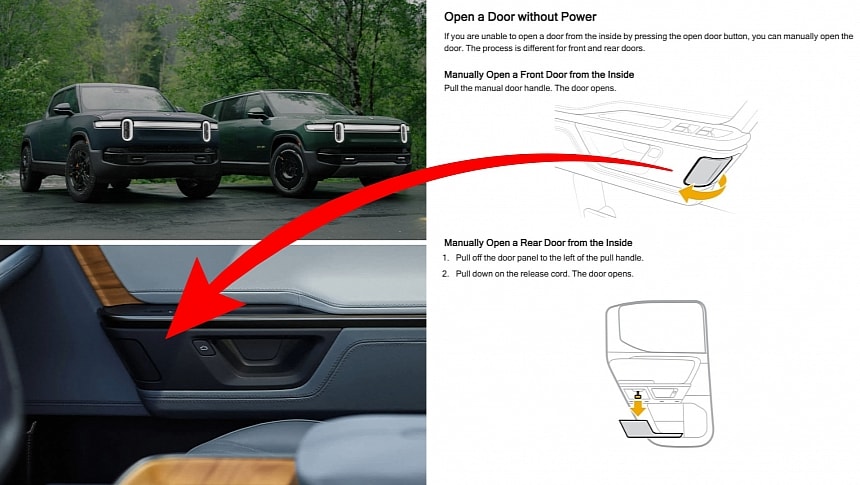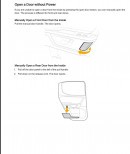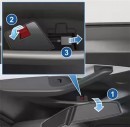Tesla has often been criticized for using an electromechanical door release system in its vehicles. Now, Rivian followed suit with the refreshed R1 vehicles. Although they still offer physical emergency releases, the design makes it difficult for rear passengers to access them should the electrical system not work.
Tesla has been innovating passenger vehicles in many areas as it tries to scale the production of its electric cars to the extreme. Some of these innovations have the purpose of saving Tesla money by making its vehicles more cost-efficient. This is why, sometimes, Tesla removes some features that many car owners take for granted. A good example is the stalks in the Model S, Model X, and now also Model 3.
One of the more controversial cost-cutting measures was replacing the physical door release mechanism with an electromechanical system. There is no physical connection between the door button and the actuator that actually triggers the door to open. This saves parts, but another reason is that Tesla designs its cars with frameless windows.
In a Tesla, the doors don't open immediately. First, the controller needs to lower the windows so that the doors can be opened. Without this additional move, the windows are trapped beneath the roofline, and opening the door can cause damage. Tesla offers a fallback mechanical system in case the electrical system doesn't work. However, this is only intended for emergencies, not regular use.
To prevent passengers from accidentally opening the door using this system, Tesla hid the emergency release. In some cases, getting to it is impossible without the proper tools to cut through the door pocket liner. Tesla has been harshly criticized for this design choice. Some even believe this caused people to remain trapped inside the vehicle following a crash, diminishing the chances of survival. This is even more dangerous if the car starts burning or submerges underwater.
Tesla solved this for some of its newer models, with the Model 3 Highland featuring a proper latch in the rear doors. This is placed at the bottom of the door pocket, under a plastic cover that can be easily removed to access the mechanical release cable. Tesla's move continues to stir controversy, but there's another carmaker that followed this recipe.
With the refreshed R1S and R1T, Rivian also adopted the cost-saving design. Rivian has no excuse because its windows are not frameless and aren't required to be lowered before doors open. Rivian implementation seems better than Tesla's, although far from perfect. Front passengers can open the door easily, thanks to a manual door handle that doubles the open door button. However, rear passengers must remove a piece of the door panel to access the manual release cord.
The owner's manual instructs owners to pull off the door panel to the left of the door handle and pull down on the release cord. This is not ideal, especially as people panic in an emergency. For those unfamiliar with the Rivian safety features and its manual release cord, it's impossible to know how to open the door if the main system is out of power.
One of the more controversial cost-cutting measures was replacing the physical door release mechanism with an electromechanical system. There is no physical connection between the door button and the actuator that actually triggers the door to open. This saves parts, but another reason is that Tesla designs its cars with frameless windows.
In a Tesla, the doors don't open immediately. First, the controller needs to lower the windows so that the doors can be opened. Without this additional move, the windows are trapped beneath the roofline, and opening the door can cause damage. Tesla offers a fallback mechanical system in case the electrical system doesn't work. However, this is only intended for emergencies, not regular use.
To prevent passengers from accidentally opening the door using this system, Tesla hid the emergency release. In some cases, getting to it is impossible without the proper tools to cut through the door pocket liner. Tesla has been harshly criticized for this design choice. Some even believe this caused people to remain trapped inside the vehicle following a crash, diminishing the chances of survival. This is even more dangerous if the car starts burning or submerges underwater.
Tesla solved this for some of its newer models, with the Model 3 Highland featuring a proper latch in the rear doors. This is placed at the bottom of the door pocket, under a plastic cover that can be easily removed to access the mechanical release cable. Tesla's move continues to stir controversy, but there's another carmaker that followed this recipe.
With the refreshed R1S and R1T, Rivian also adopted the cost-saving design. Rivian has no excuse because its windows are not frameless and aren't required to be lowered before doors open. Rivian implementation seems better than Tesla's, although far from perfect. Front passengers can open the door easily, thanks to a manual door handle that doubles the open door button. However, rear passengers must remove a piece of the door panel to access the manual release cord.
The owner's manual instructs owners to pull off the door panel to the left of the door handle and pull down on the release cord. This is not ideal, especially as people panic in an emergency. For those unfamiliar with the Rivian safety features and its manual release cord, it's impossible to know how to open the door if the main system is out of power.
Something I haven’t seen discussed at all is the fact that the new Rivian R1 Gen 2 requires rear seat passengers to have to take a piece of the door panel off to access the manual release.
— RivianTrackr (@RivianTrackr) June 9, 2024
In the event of an emergency, people don’t typically react correctly and wouldn’t be… pic.twitter.com/Z5zagbsab7







